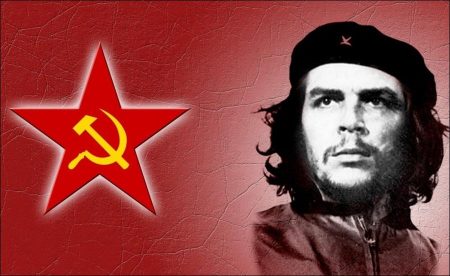Ernesto Che Guevara is regarded as one of the greatest leaders in the struggle for independence and freedom around the world. The struggle he fought in his own country in the 60s is set an example by today’s revolutionaries. And Ernesto Che Guevara is the greatest inspiration for the subsequent struggles for independence and freedom. So we wanted to take a look at the general outline of the life of this great revolutionary.
If I say Che Guevara, one of the most important symbols of the Cuban Revolution, everyone probably has a portrait of Che in his head. I would like to mention a little-known feature of Ernesto Guevara de la Serna, one of the most original characters created by the chain of revolutions of the 20th century.
At this point, I will not begin with sections of Che’s life, to be called by everyone. What I would like to mention is that when I was an ordinary medical student, I would like to talk about Cuba, the so-called brothel in the backyard of the US, the Che of the cadre who created a socialist state, the Che who was tired in Africa and reached Saintness in Bolivia.
Che Guevara, who is now considered a pop culture icon by most people, has been abandoned and left behind in a very different sense than Bolivia’s dense forests. Che Guevara, who has spent his life fighting for revolutions and revolutionaries all over the world, forsaking his ministry, fame and unshakable role in the bureaucracy, is a saint for the villagers of Higuera, a poor village in the ethics of the Eastern Bolivian Mountains. The villagers consider Che Guevara a saint.
In Santa Cruz and Chuisaca, where he spent the last eleven months of his life, Che is a patron saint for the villagers who reported him to the Bolivian government. The villagers think that by informing him, they share their greatest sin and have atone for him. The villagers of Higuera repeatedly reproduce the messages, words and practices of Che during his time in the region, finding Marxism a bit of mysticism. Each story tells her to embrace her saint myth.
Some villagers even use the following words when describing it:
’He was a doctor and helping pregnant women. There was no way here. Our children were dying as soon as they were born. And he was a great traveler. He was constantly moving. We should have understood his message when he was alive. He spoke of extraordinary things such as the elimination of inequality, social justice, compulsory health care and school aid, and he especially wanted us, the poor, to stop starving. But we were afraid and we didn’t help him. We know why you fought today. He died for us. Just like Jesus. He was a true saint.”
‘We didn’t even have a path to get out of the plain until he came.’
So why did a village people who loved Che Guevara so much as he turned him in and killed him? The answer to this complicated question is not clear, but a former soldier who fought against Che answered:
“Guevera had lost the war from the beginning. We knew you couldn’t get public support. Land reform had been done in 1967. The villagers felt they had land, and although they lived in very difficult conditions, they did not yet have enough reason to engage in a war.”
Half a century after his death, even if he had no views, his mark still lives on millions of people, and his famous iconic portrait adorns streamers. On the contrary, we see his face on the object of the kind. Che can, as I said at first, find a different meaning for everyone. But in addition to all of this, it is a saint, like many saints, for the people of the region who share sin, causing the death of such a personality.
Visits: 139



